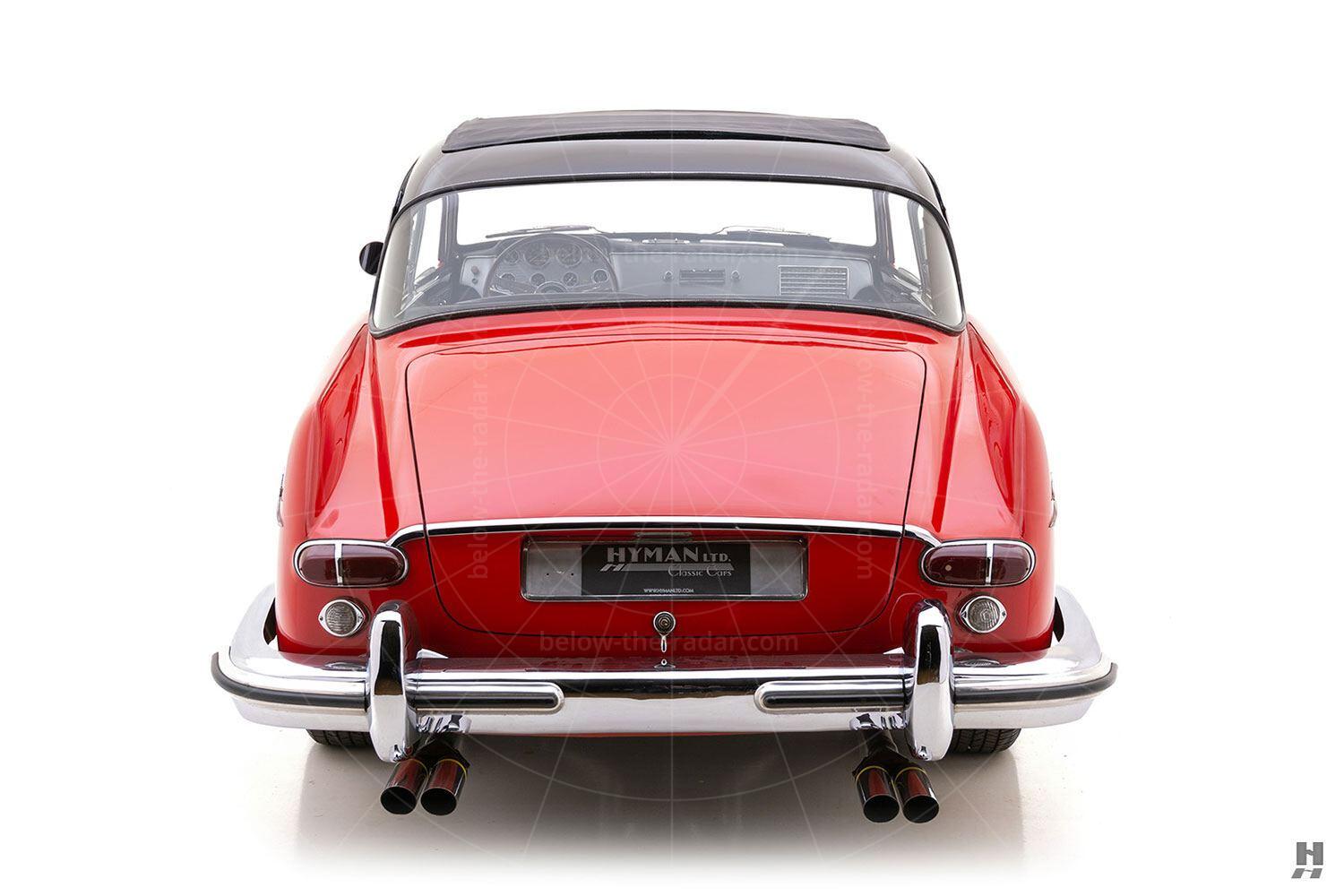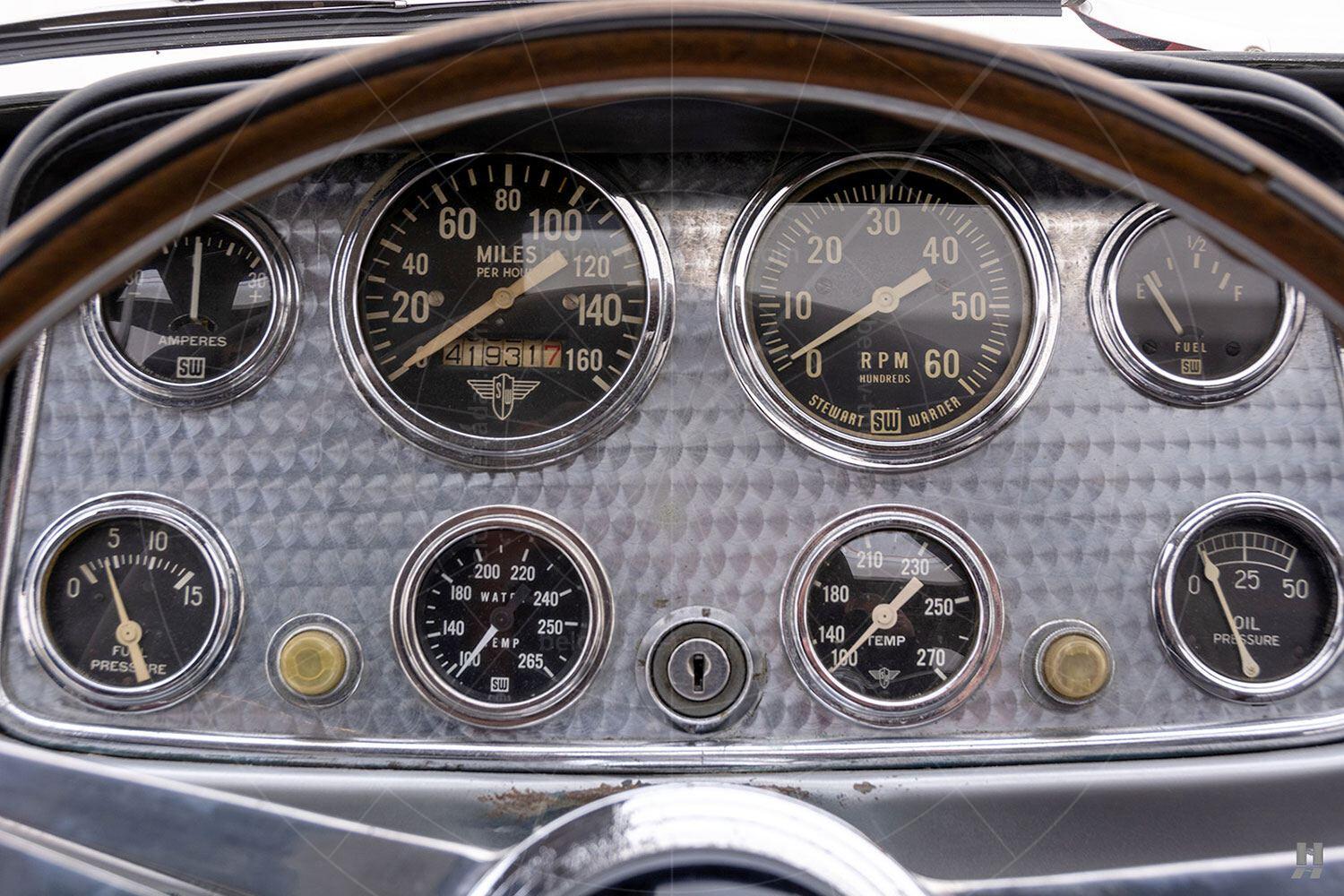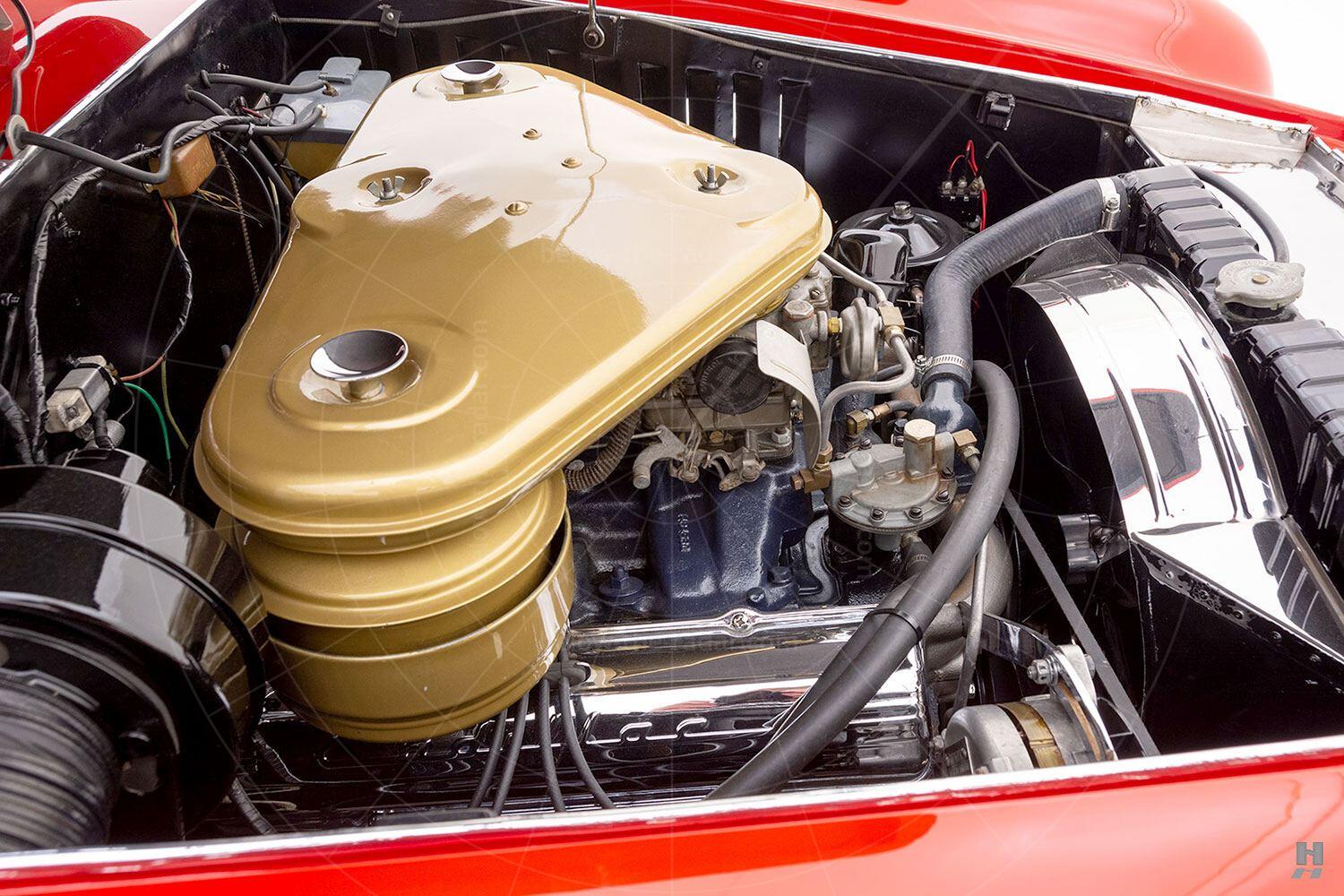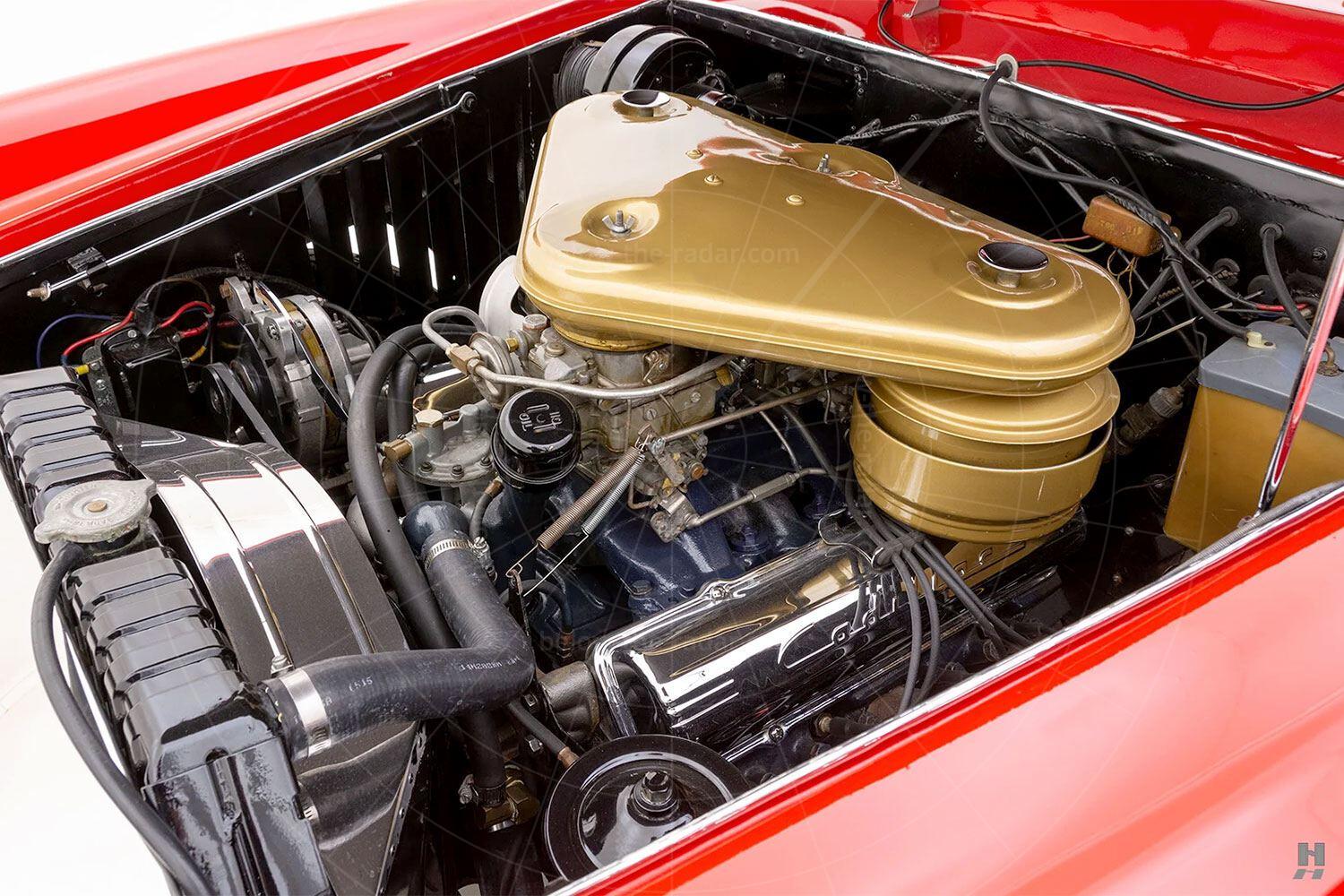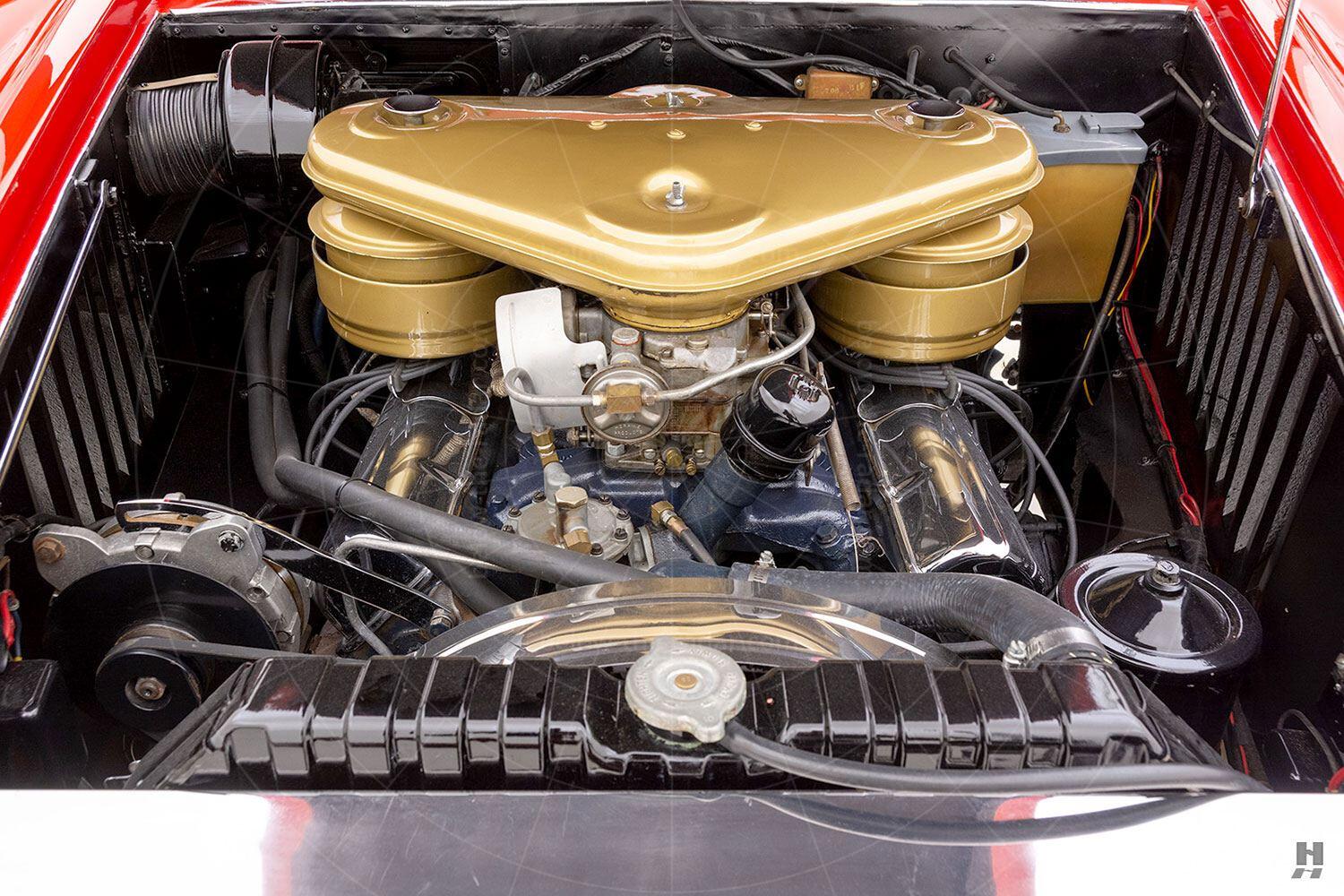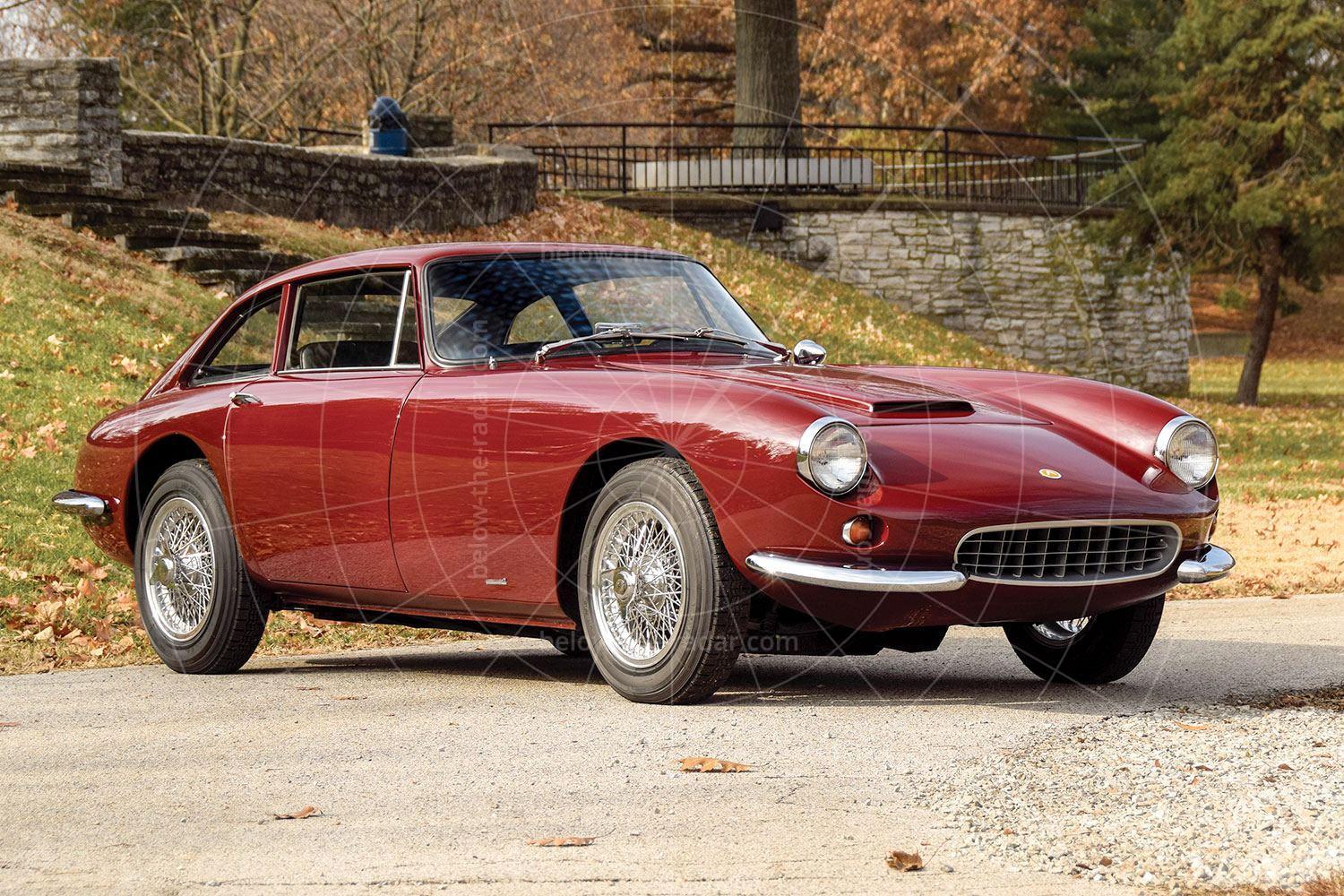To anyone involved in the burgeoning American sports car scene in the 1950s, Bill Frick is a legendary character. As early as the 1930s, Frick was stuffing big engines into small cars, and enthusiasts soon came to know him as 'the king of engine swaps'. Customers soon came knocking to have Frick build their racing cars.
In the local oval-racing scene, Frick met Phil Walters, a hotshoe driver known for his wild, aggressive style and who raced under the pseudonym 'Ted Tappett' to keep his family from discovering his secret. The two men made a successful pairing, with Frick turning wrenches and Walters doing the driving. They eventually formed Frick-Tappett Motors on Sunrise Highway in Rockville Center, New York, dealing in repair, race prep, engine swaps, and sports car sales.
In 1949 Cadillac introduced the new 331 cubic-inch overhead-valve V8 engine. Despite it being saddled by heavy bodies, Frick immediately saw the engine’s potential, and shoved a 331 into a considerably lighter 1949 Ford chassis, and the Fordillac was born. One notable early customer was Briggs Cunningham, who bought a Fordillac after seeing one tear up a hillclimb event in Connecticut.
Cunningham was so impressed by Frick’s work that he purchased Frick-Tappett motors, relocated it to Florida, and hired Bill to prepare the team’s Cadillac-powered machines for the upcoming Le Mans 24 Hours. Walters served as a driver and team manager. While success proved elusive at Le Mans, the team achieved back-to-back 1-2 finishes at Watkins Glen and Elkhart Lake, earning Bill Frick the first-ever Sports Car Mechanic of the Year award.
Frick soon returned home to New York to resume his car-building activities as Bill Frick Motors. He became enamoured with the new 1953 Studebaker coupé but was equally unimpressed by its anaemic 120bhp engine. This led to a new project: the Cadillac-powered Studillac. Much more than just an engine swap, Frick modified the crossmembers, suspension, transmission tunnel, brakes, and steering to handle the additional power of the Caddy V8.
By 1953 the Cadillac V8 was making 210bhp in stock form, and very few Studillacs left Frick’s shop with stock engines. The Studillac had searing performance to match the beautiful looks, and orders came pouring in. It became a highly exclusive and eminently desirable performance machine, and it even featured in Ian Fleming’s James Bond novel Diamonds are Forever.
When Studebaker unveiled a considerably less graceful design in 1955, Frick went looking elsewhere for his next project. He shipped a Studillac chassis outfitted with heavy-duty dampers, springs, track bars, and anti-roll bars to Vignale in Italy for a bespoke body. When it returned, it was dressed in beautiful new coachwork designed by Giovanni Michelotti. Despite the promise of the high-performance chassis and wonderful Italian coachwork, the project was fraught with complexities, and Frick threw in the towel after just two coupés and a cabriolet.
Pictured here is the only Bill Frick Special GT Coupé made. Frick completed three cars: a prototype, a convertible, and this single 'production' GT. The $9000 grand tourer was ordered new by John Blodgett Jr., a fabulously wealthy heir to a Michigan lumber fortune. He wanted to enjoy an open-air motoring experience but preferred the looks and handling of a coupé, so he specified a full slide-back fabric sunroof. He also requested a Pont-a-Mousson four-speed manual gearbox, against Frick’s recommendation. Period photos show the car left Vignale finished in a striking light blue livery with a black roof, light blue-grey leather interior, and dressed with wide whitewall tires and elaborate wheel covers. Frick later updated it to Borrani wire wheels.
Blodgett owned the Frick GT into the mid-1960s when he gifted it to his secretary and her husband. By 1970 it had transferred to its third owner, Emmett Boitz of Oregon. By then, the light blue paint was looking a little shabby, so he repainted the car silver. After three years with the Frick Special, Boitz passed it to fellow Oregonian Earl Benz, who rarely used the car, and kept it tucked away until the late 1980s. In 1989 it was repainted its current red with a black roof and sold to Michael Pomerance of Massachusetts. He recognised the car’s significance and spent years corresponding with Bill Frick and others to document the car’s remarkable history, as well as sparing little expense preserving it.
When the car came up for sale at Hymans in 2021, the Bill Frick Special was in excellent condition, showing just over 41,000 miles and with its older repaint remaining in fine order. The original bumpers and exterior trim were in place, and details included the Borrani wheels fitted early in the car’s life, bespoke 'Bill Frick Special' badges, and quad-tip sports exhaust. The original grey leather upholstery was beautifully preserved, while details like the SW gauges and Magic Aire ventilation system gave away the car's Studebaker roots.
* The car pictured was sold by Hyman Ltd. Many thanks to Hyman Ltd for the use of its pictures to illustrate this article.




